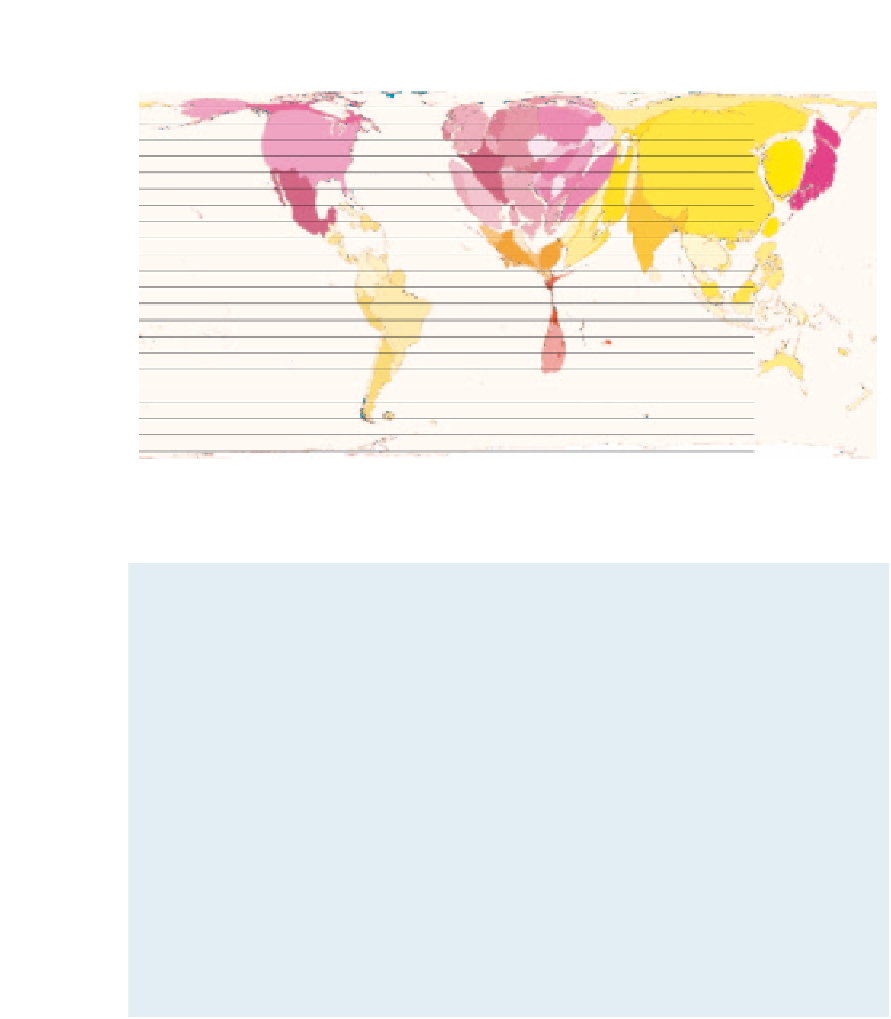Geography Reference
In-Depth Information
Swaziland and Lesotho from Figure 5.23. Can you identify any others? Given that these maps
show 54 territories in Africa, this list is nasty, brutish and short (after Hobbes, 1651).
1
Figure 5.23
Territory size shows the proportion of all people living on PPP US$20-50 a day
worldwide that lives there (Worldmapper Map 155)
Text Box 5.22: Living on $20-50 a Day
The largest population living in households where people rely on US$20-50 a day,
in purchasing power parity (PPP), is China (192 million people). The second largest
population in this range, less than half the Chinese total, lives in the United States
(80 million). Russia has the third biggest population (41 million) living on this daily
amount, which is half the number of its equivalent in the United States.
The highest regional percentages of the population living on PPP US$20-50 a day
are found in Europe. However an even higher percentage of Eastern Europeans rely
on PPP US$10-20 a day, whilst a higher percentage of Western Europeans earn PPP
US$50-100 a day.
English language speaking guides can earn about US$25 per day; French,
German, Chinese and Thai language speakers, US$30 per day; Japanese speakers,
US$35 and Italian language speakers upwards of US$40 per day
(Myanmar Times, 2006)
1
Hobbes (1651) argued in
Leviathan
that the lives of masterless men living without laws and subjection
to coercive power would be 'solitary, poor, nasty, brutish, and short'. See the
Stanford Encyclopedia of
Philosophy
, accessed on 12 January 2007: http://plato.stanford.edu/entries/hobbes-moral/: 'Lives may now
be nasty, brutish and short not because we lack “civilisation”, but our civilisation is lacking. Laws and
coercive power often maintain inequalities more effectively than they challenge them'.












Search WWH ::

Custom Search